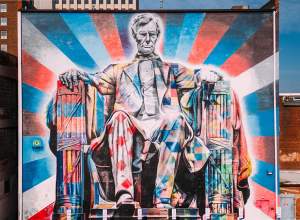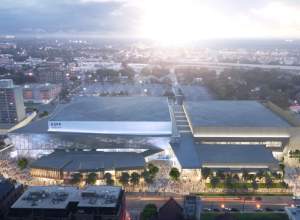The story of the Underground Railroad is a story of survival, of giant struggle and the ability to overcome.
Kentucky was the last state enslaved peoples needed to pass through on the Underground Railroad’s northern route to freedom. One of the hidden “stations” on the Underground Railroad was located at Lexington’s St. Paul African Methodist Episcopal Church on North Upper Street. It was installed in 1850 and remains there today. Concealed behind the pulpit are a narrow set of twisting stairs that lead to a small room where the enslaved peoples waited for the route to be safe and help available for them to cross the river into Cincinnati.

In honor of the room’s legacy, St. Paul AME has changed it as little as possible. It is about six feet wide and ten feet long, with unvarnished wood floors and bare plaster walls with one window. The room breathes history, says the church’s pastor, William Hale; the bravery, determination, fear and hope it held ever present.
“It is an awesome task to be not only the sacred caretakers of the room but the proclaimers of keeping history alive,” says Hale. “There are some who wish slavery could be a footnote to history, but you can’t do that to a people. Slavery cannot be just a page in a book. That history is guiding the social forces of today.”
St. Paul AME has been in the city since 1820, and is believed to be the oldest continuously-used house of worship in Lexington. It has been in its current location since 1826. In 1885, prominent black Kentuckians met at the church to discuss, create and then adopt a resolution that asked the government for better public schools and a school for educating black teachers. The following spring, Governor J. Proctor Knott signed a bill that called for the creation of that teachers’ school, which exists today as Kentucky State University in Frankfort.
Pastor Hale attended services at the church as a kid 30 years ago. He would sit in the pews and think about the slaves in the room up above him over a century earlier, waiting in stillness to the sound of their breath and the beating of their hearts.
“It’s a calling for us as a congregation to preserve this sacred space,” he says. “The story of the Underground Railroad is a story of survival, of giant struggle and the ability to overcome.”
To inquire about the availability of seeing the Underground Railroad station at St. Paul AME Church, 251 North Upper Street, call the church office at (859) 255-7945.
Leslie Guttman
I grew up in Lexington, Ky., and went to journalism school at Ernie Pyle Hall at Indiana University Bloomington. My articles, essays, and commentary show that the range of what I write about is extremely wide. One of my themes seems to be writing about situations where there is something great at stake. I consistently strive to immerse myself in unreported worlds. I work in multiple formats: print, public radio, Web, and video. I also write and consult for corporate and nonprofit clients.
















